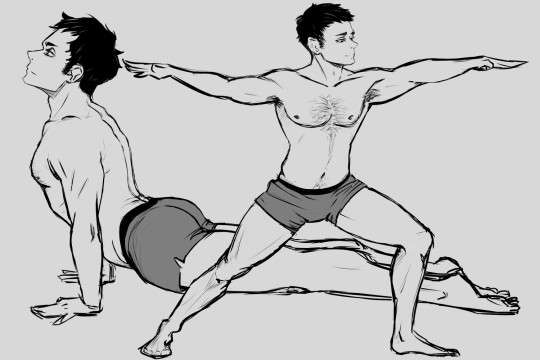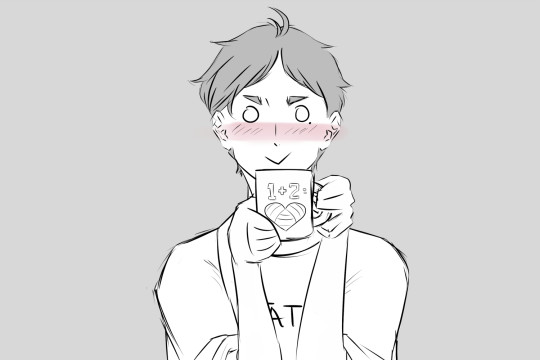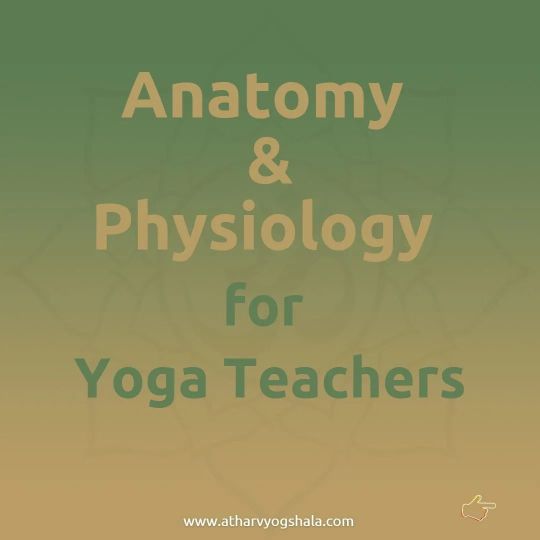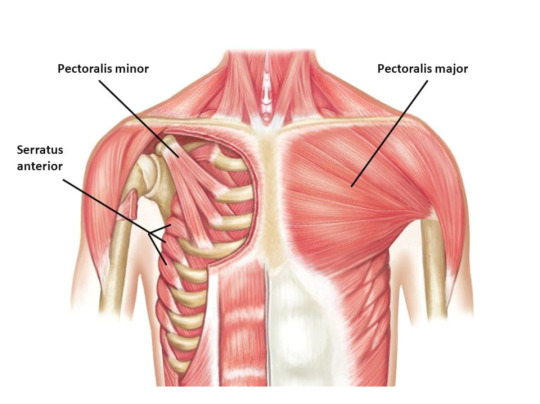#anatomy for yoga
Text


Daichi picks up yoga when he gets older because it keeps him limber and helps alleviate the stress his job puts on his body. His husband sips coffee in the morning and watches... very respectfully.
#daisuga#sawamura daichi#sugawara koushi#daichi#suga#haikyuu#haikyu#fanart#tw: partial nudity#anatomy practice#plus my boy’s face#means it’s fan art now#yoga poses are fun to draw#sketchydoo
291 notes
·
View notes
Text


Important thing my teacher told me: it's a myth that a cross twine is harmful to health. In fact, improper cross splits ruin our knees. If you turn your knees forward rather than upward, the pressure can severely damage the joints.
12 notes
·
View notes
Text
Book of the Day
Today’s Book of the Day is Yoga Anatomy, written by Leslie Kaminoff in 2007 and published by Human Kinetics.
Leslie Kaminoff is a renowned yoga and breathing teacher, writer, and educator inspired by the tradition of T.K.V. Desikachar, who used breath as a yoga-centered way to promote healing.
Yoga Anatomy, by Leslie Kaminoff
I have this book because as a yoga teacher, I can confidently say…

View On WordPress
#Anatomy#Book Of The Day#book recommendation#book review#bookstagram#booktok#Raffaello Palandri#Yoga
10 notes
·
View notes
Text
Discover Physiology & Anatomy, Discover Yourself
Learning and understanding the physical bodily functions will help prevent injury before, during and after practice. The types of yoga anatomy are both physical and spiritual. This will include the study of digestive, respiratory, circulatory, nervous and endocrine systems. Also organs and Chakras. The anatomy studies will teach how the body is affected by Asanas - skeletal, muscular and joint movements.
Join us for an unforgettable and life-changing experience at Om Shanti Om Yoga Ashram. Sign up for our yoga teacher training program today! 📚
Yoga Teacher Training Courses Starting Date:-
🗓️ 02nd Jun to 27th Jun 2024
🗓️ 07th Jul to 31st Jul 2024
🗓️ 04th Aug to 29th Aug 2024
And many more great learnings with us.
For more information
✔️ Call / Whatsapp: 089797 35058
✔️ Website: www.omshantiomyoga.com
✔️ Email us at: [email protected]
3 notes
·
View notes
Text

2 notes
·
View notes
Text
12 August 2023, Saturday 👀👀
After brooding for a very long time🥴 on the idea, today I finally started the yoga Sun Salutation🧘🧘. It was very exciting😄 as I was learning the different poses😌😌 and succeeded in doing🥳 so but now my shoulders🥲🥲 are paining. It was good that I tried only for two times the very first day otherwise it would have complicated my problem🙃. Now I feel as if I have been working for the whole long day😑😑. As always it is advised to start slow and gradually increase the limit. Tomorrow I am thinking of doing it three times😗😗. You know I have also started drinking coffee☕☕ again for 2 days consecutively, but today I will give it a break✌️.
Since I was bored till death🥱🥱 from the past 2 days, hence decided to do something constructive like doing 🧘🧘🧘meditation and affirmation before sleeping . Basically trying to inculcate some good habits and positive thinking (The Power of Subconscious Mind)☺️. Thought to finally give it a try. At least see if I succeed in doing it daily. Well I was also thinking🤔🤔 to enhance my writing skill a bit. I write amazingly when I am stressed😮💨 or I'm freaking out😖, basically when my adrenaline is high🤯. But in future I cannot depend on my adrenaline, instead this should be my skill, my hobby or whatever you say and a polished one. There are other plans which I am planning to work out sometime later let's see if it bore's fruit🙁. Hoping for my counselling to begins soon so that I would officially be a medical student👩🏻⚕️👩🏻⚕️👩🏻⚕️👩🏻⚕️ and step in the realms of the world. 🤗Bye for now. Will update you soon.👀
#feelings#emotions#reading#anatomy#book review#medicine#im bored#boredom#self love#yogainspiration#yogaposes#yogaeveryday#yoga#escaping the reality#exicted
2 notes
·
View notes
Text

Yoga is one of the most popular forms of exercise that has a great impact on our physical and mental health.
To understand its impact, it is important to know the inner structure and functioning of the body.
As a yoga teacher or practitioner, you must be familiar with the limitations of each body type and its level of experience.
Therefore teachers must learn about the basics of anatomy and physiology to understand what’s going on in the body and achieve the full benefits of yoga.
What is Yoga Anatomy?
Anatomy is a medical term and it deals with the study of basic structures of the body. Its teaching includes the study of bones, muscles, joints, and other internal organs of the body.
All Yoga teachers need to understand the structure of the human body to increase the effectiveness of asanas and protect the body from injuries.
With this anatomical awareness you will be prepared to deal with injuries in an effective, yet protected manner.
What is Yoga Physiology?
Yoga Physiology is the science that deals with the functioning of the body parts and their specific roles.
Its teaching includes the study of the function of different organs like respiration, reproduction, digestion, osmoregulation, and a lot more.
It is a dynamic study that reveals how different systems in the body function collectively as a single unit that is moved by energy.
Anatomy vs Physiology
The word ‘anatomy’ refers to the ‘structure of body’, while ‘physiology’ refers to ‘function of the body’.
In the anatomy of yoga, you will learn about the detailed structure of different parts and organs of the body.
Whereas in yoga physiology you will be studying the functions of these body parts and organs in a coordinated way.
These two terms are often studied jointly and are incomplete without each other. One needs to know anatomy before acquiring the knowledge of physiology, conversely, only studying anatomy without understanding physiology is simply worthless.
#anatomyofyoga#anatomy#yoga#yogateacher#yogapractice#anatomyandphysiology#yogajourney#anatomystudy#anatomynerd#anatomypractice#yogaanatomy#yogainspiration#anatomyforyogis#anatomyinmotion#anatomyartwork
2 notes
·
View notes
Text


Femural Differences & Variations in Baddha Konasana (Bound Angle Pose / Seated Hip Opener): From "The Science of Yoga: The Anatomy and Physiology to Perfect Your Practice"
4 notes
·
View notes
Photo

SUBTALAR JOINT ⠀ [ANATOMY, FUNCTION & BIOMECHANICS] ⠀ Regarding my previous post about myofascial treatment of the „INVERSION TRAUMA“ it is very important to mobilise the subtalar joint if it is restricted. If your patient suffers from an inversion trauma, you will most likely find a restriction in the subtalar joint. ⠀ Don’t look at the ankle only, examine the whole body! ⠀ The subtalar joint isn’t discussed as much when it comes to the ankle. More commonly, the talocrural joint is discussed, as it is involved in plantarflexion and dorsiflexion. ⠀ The subtalar joint is where the talus meets the calcaneus (heel bone) at the hindfoot. The subtalar joint is considered a ‘gliding’ joint, as it displays a combination of translational and rotational movement. The joint allows for inversion and eversion of the foot/ankle complex. This motion can be seen in the pictures 7-9. ⠀ Adequate mobility and control at this joint is important both statically and dynamically: ▪️Statically, it is important to be able to find a ‘neutral’ position. This allows for ideal foot and ankle placement, and a stacking effect through the entire lower body. Efficient use of the foot/arch depends on a well controlled and positioned subtalar joint. ▪️Dynamically, this joint gives the ankle more degrees of freedom. It acts as a buffer to allow for rotational/frontal plane movement when walking over uneven terrain for example. ▪️The combination of movement from the talocrural joint and subtalar joint turn the ankle into an important shock absorbing and movement buffering complex (when they are moving well). This helps disperse movement through the lower chain, making it easier on the knee and foot (upstream and downstream). ⠀ After an inversion trauma (ankle sprain injury) it is very important to assess this joint as well and if required to mobilise it as it can force knee problems or even hip or lower back problems through a so-called ascending kinematic chain! ⠀ #phiotherapy #osteopathy #ankle #foot #rehab #anatomy #movement #mobility #education #yoga #pilates #crossfit #medicine #pain #therapy #sportstherapy #physicaltherapy #manualtherapy #supinationtrauma #inversiontrauma #anklesprain https://www.instagram.com/p/Cl-19nPASmB/?igshid=NGJjMDIxMWI=
#phiotherapy#osteopathy#ankle#foot#rehab#anatomy#movement#mobility#education#yoga#pilates#crossfit#medicine#pain#therapy#sportstherapy#physicaltherapy#manualtherapy#supinationtrauma#inversiontrauma#anklesprain
4 notes
·
View notes
Text
"Anatomically, they open the hamstring muscles, which are the group of muscles responsible for much of our daily activities, such as walking, running, and climbing stairs. Energetically, the backs of the legs are where we store our unconscious pattering, the limiting beliefs and false narratives that we acquire from a very young age."
-Deepak Chopra and Sarah Platt-Finger, Living in the Light (2023)
0 notes
Quote
Author’s note: I re-watched Howl’s Moving Castle recently and I loved it! I’d been trying to finish up Grey’s Anatomy, though that’s been a colossal endeavor. I knew it had many seasons but 17 seasons (?) was more than I had imagined. I realized after a while, regardless of how engaging and shocking the writing was, after the third episode of watching in a row, I check out and start checking other social media. I might as well save that episode for later and do something more active (e.g., crocheting, yoga, etc.)!
#thoughts
0 notes
Text
Pelvis And Perineum Anatomy Question And Answers
#physiotherapy#pilates#fisioterapia#yoga#pisopelvico#physio#backpain#pelvicfloorphysicaltherapy#Pelvis And Perineum Anatomy Question And Answers
0 notes
Text
Mastering the Muscles of the Chest: Anatomy and Clinical Insights for Medical Students
The chest region, also known as the thoracic cavity, houses essential organs such as the heart and lungs and is supported by a complex network of muscles. Understanding the anatomy and function of these chest muscles is crucial for medical students, as it forms the foundation for diagnosing and managing various musculoskeletal conditions and respiratory disorders. In this comprehensive blog, we…

View On WordPress
0 notes
Text
Book of the Day - Yogabody
Today’s Book of the Day is Yogabody: Anatomy, Kinesiology, and Asana written by Judith Hanson Lasater in 2009 and published by Rodmell Press.
Judith Hanson Lasater is a world-renowned American yoga teacher and writer. She writes about yoga, its practice and philosophy, food and nutrition, fitness, and wellness. She also contributed to found the Yoga Journal magazine.
I have chosen this book…
#Anatomy#Asana#bones#Book Of The Day#book recommendation#book review#connective tissues#joints#kinesiology#locomotor system#lower extremities#muscles#nerves#Raffaello Palandri#textbook#trunk#upper extremities#vertebral column#Yoga
0 notes
Text
Exploring Yoga Anatomy: During 200-Hour Yoga Teacher Training in India
Welcome to Om Shanti Om Yoga Ashram, dedicated to the profound exploration of yoga anatomy. In this informative video, we delve into the intricate aspects of the human body, elucidating the fundamental principles that underpin a holistic understanding of yoga practice. Our goal is to empower yoga enthusiasts, practitioners, and instructors alike with a deeper knowledge of anatomy, fostering a safer and more effective approach to their yoga journey.
I. Importance of Yoga Anatomy:
Understanding the anatomy of the body is paramount in maximizing the benefits of yoga practice. This knowledge aids in proper alignment, prevents injuries, and enhances overall body awareness. Our video seeks to unravel the mysteries of human anatomy, demystifying complex concepts and providing practical insights applicable to various yoga poses and sequences.
II. Key Components Explored:
a. Skeletal System: We delve into the skeletal structure, elucidating how bones interact and support the body during different yoga postures. Emphasis is placed on alignment principles to promote stability and balance.
b. Muscular System: An in-depth examination of the muscular system helps practitioners comprehend muscle engagement, contraction, and relaxation. This section addresses the importance of building strength and flexibility for a well-rounded yoga practice.
c. Respiratory System: Breathing is integral to yoga, and our video outlines the mechanics of the respiratory system. Viewers gain insights into how breath control (pranayama) contributes to the overall enhancement of their practice.
d. Nervous System: We discuss the role of the nervous system in coordinating movements, balance, and proprioception. Understanding the mind-body connection facilitates a more mindful and intentional practice.
III. Practical Applications:
Our video goes beyond theoretical concepts, offering practical applications of yoga anatomy. Through visual aids and real-life examples, we guide viewers on how to incorporate anatomical knowledge into their asanas, ensuring a harmonious blend of physical and mental well-being.
IV. Expert Interviews:
To enhance the credibility and depth of our content, we include interviews with experienced yoga instructors and certified anatomists. Their insights provide additional perspectives, offering a comprehensive view of the intricate relationship between yoga and anatomy.
Conclusion: In conclusion, our aim is to serve as a valuable resource for individuals seeking to deepen their understanding of the human body in the context of yoga. By integrating anatomical knowledge into their practice, viewers can cultivate a safer, more informed, and fulfilling yoga experience. Join us on this enlightening journey as we unravel the secrets of yoga anatomy, empowering you to embark on a transformative and sustainable path in your yoga practice.
2 notes
·
View notes
